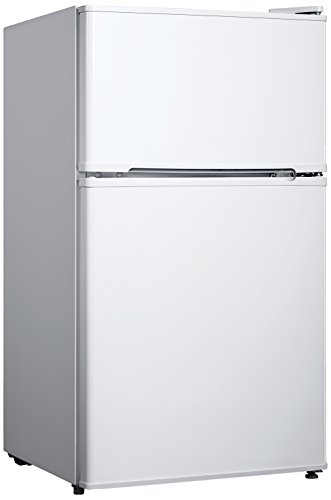
Frydge
Add a review FollowOverview
-
Sectors Hospitality
-
Posted Jobs 0
-
Viewed 1145
Company Description
Why Fridge With Ice Maker Is Fast Becoming The Trendiest Thing In 2023
Benefits of a Fridge With an Ice Maker
Many refrigerators have an ice maker built in the door or in the interior of the freezer, making it simple to pour fresh, cold water. These refrigerators are generally more expensive than other refrigerators however they can save you the headache of filling and cleaning Ice trays.
The circuit of the ice maker sends current to an ice valve. The water then flows through the mold, which then freezes to form cubes.
Convenience
 It is obvious that having an ice maker in your fridge will help you save time. Instead of filling tray manually, the ice maker does this for you. It is usually activated by a sensor that detects water levels in the freezer. Once it reaches the proper temperature, the process of making ice commences. A valve opens and a cooling device channels water into the molds for ice. A built-in thermometer measures the ice to ensure that it is completely frozen and when it is the valve shuts down and the ice is transferred from the molds to the storage bin.
It is obvious that having an ice maker in your fridge will help you save time. Instead of filling tray manually, the ice maker does this for you. It is usually activated by a sensor that detects water levels in the freezer. Once it reaches the proper temperature, the process of making ice commences. A valve opens and a cooling device channels water into the molds for ice. A built-in thermometer measures the ice to ensure that it is completely frozen and when it is the valve shuts down and the ice is transferred from the molds to the storage bin.
It is also useful when you host guests. You’ll always have plenty of to ice, and you will avoid embarrassing situations when guests ask you for more ice only to discover that you’re not in. There are refrigerators equipped with an ice maker. These have a dispenser inside the door, making it easy to get water in and serve without opening the refrigerator.
Refrigerators that are equipped with Ice makers also consume less energy than traditional models. The ice-making device requires a small amount of electricity to run, and since they are typically utilized for extended periods of time, this can result in a significant reduction of your energy bills.
If you want to reduce your costs even more you can select one that doesn’t use cooling towers. Refrigerators that have an ice maker are referred as “direct cool” models, and they make use of the refrigerant already cooling your refrigerator to make ice. These units are more energy efficient than standard ice makers and can cut your energy consumption by as much as 25%. This can help you save money on energy bills and reduce your carbon footprint at the same time.
 Efficiency
Efficiency
The use of an ice maker means you don’t have to spend time filling and freezing ice cubes. Additionally, these devices provide an ongoing supply of fresh ice for you to pour from the refrigerator or pour into your drink when you need. This makes them more convenient than refrigerators which require you to go inside the freezer to get an ice bag from the storage bin.
The majority of refrigerators with ice makers are combination models that have an ice maker in the freezer compartment as well as the traditional refrigerator compartment. You can find standalone fridge/Fridges Freezers with ice maker built in the door or back of the freezer.
Generally the ice maker inside your fridge is powered by your home’s main water supply line. To start the cycle, a timed switch in the circuit briefly sends electricity through wires that connect to the water valve. This opens the valve, which then lets water flow into the molds for making ice. The built-in thermometer informs the timed-switch when the ice-making process has been completed. This signifies that the ice has been sufficiently cooled to stop the water from entering the molds. A motor rotates a shaft using arms that move the ice into the bin tray that holds the ice.
Some ice machines allow you to choose between two types of ice which are standard ice cubes and crushed ice. This is a great option for hot weather, when you’re trying to cut down on the amount of time it takes to cool your drink down.
If your ice maker stops producing ice or the produced ice is squishy and misshapen, it may be due to the fact that your freezer was set to a low temperature. Check your owner’s manual to find the manufacturer-recommended temperature and try setting it higher.
If your ice maker isn’t producing ice or producing very little, it could be because the water fill tubes are blocked. The ice-making system gets its water from your household’s main water supply line, so these tubes need to be free of obstructions in order to function properly. Based on the state of your home’s water, these tubes could develop mineral deposits and blockages over time. They can be eliminated using a pipe-cleaner or by running the water line in your refrigerator through a filter.
Water Dispenser
The water dispensers on refrigerators that have ice makers allow you to enjoy chilled, filtered drinking water without having to open the refrigerator’s door. Some models allow you to add carbon dioxide to make sparkling water, or pour hot water into the teapot, coffee maker and more. These models are generally more expensive than refrigerators with icemakers and require a separate connection to the water that is melted into Ice.
In the 1980s, refrigerators started offering ice and drinking water dispensers. These were basic automatic ice makers that made one block of ice every day. A majority of refrigerators have an ice maker and water dispenser built-in.
The dispenser works by pulling cold water from the refrigerator’s internal plumbing, transporting it to a small water filter that screens out particles and other basic contaminants. The water is then taken to an ice mold, which transforms it into one solid block of ice. The ice is then stored in a bin until ready to be dispersed.
If you’re in the mood for a glass of water, a timed switch within the refrigerator’s circuit briefly sends a current down the wires connected to the dispenser. This current triggers a solenoid that opens the water valve for seven seconds, letting in just enough water to fill up an ice mold. The ice mold is usually made of plastic and has a series of connected cavities. The valve is closed when the ice has been made. This allows the ice to fall out of the mold into the bin, where they are waiting to be distributed.
A little troubleshooting can solve the majority of issues with refrigerator water dispensers or ice makers. For more detailed information, visit our Fridge Dispenser Troubleshooting article to learn about the most frequently occurring reasons for these issues and the best way to solve these issues.
Use traditional Ice cube tray that you can fill up at the kitchen sink as an alternative to refrigerator water dispensers and ice dispensers. These trays can hold up to 25 cups of ice and provide greater flexibility in deciding the amount of ice you’d like at any given time.
Cost
The convenience of having an icemaker inside your fridge comes with an expense. Refrigerators that have ice makers usually cost more than those without them because they have to be professionally installed and connected to a water line and may require additional repairs or maintenance. Also, refrigerators with ice makers consume more energy.
The majority of refrigerators and freezers with an ice maker have the option of making normal ice cubes and crushed ice. There is also a variety of sizes and shapes to choose from so you can customize your ice according to your preferences.
It’s normal for people to get used to a certain type of ice and then be disappointed when they are unable to find it in the supermarket or in a restaurant. When you have a fridge with an ice maker, you can avoid this issue by setting up your refrigerator to make your preferred kind of ice on a regular basis.
If you are a frequent drinker or host large gatherings it can be difficult to not have enough ice. When you’re at home after a workout, relaxing with your spouse after a long day or entertaining family and friends at your home, you deserve to be able to drink any time you want.
One of the main advantages of having a fridge with an ice maker is that it provides you with peace of mind knowing that you’ll have a constant supply of ice for all occasions. If the appliance breaks down, you will need to engage a professional to fix it.
The cost of a refrigerator or standalone ice maker repair depends on the issue, model and the appliance. Here are a few of the most frequently encountered issues:
If your fridge has an ice machine that isn’t producing ice It could be due to an obstruction in the supply tube or malfunctioning valves for water inlet. These components contain electrical components which can be damaged over time. A professional will charge between $150 and $200 to replace the parts.

